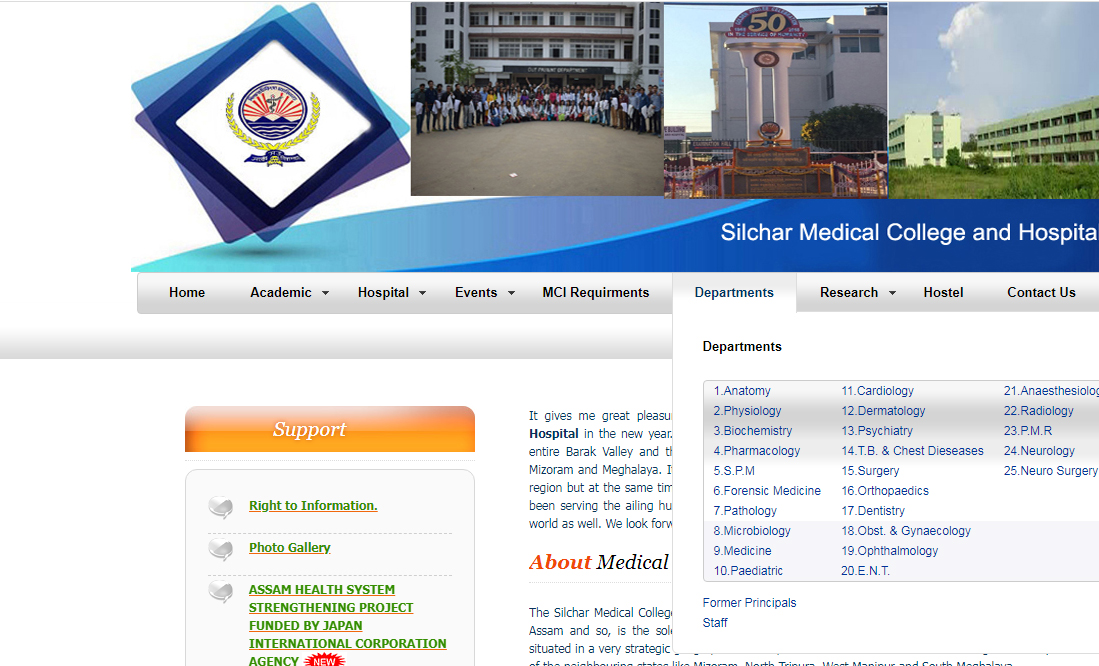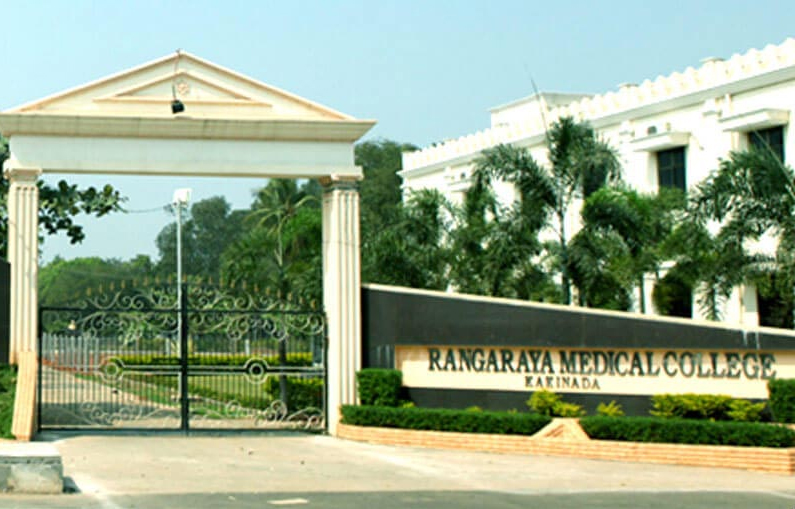શ્રી વેંકટેશ્વર ઇન્સ્ટિટ્યૂટ ઑફ મેડિકલ સાયન્સ (SVIMS), તિરુપતિ

Introduction
- Read more about શ્રી વેંકટેશ્વર ઇન્સ્ટિટ્યૂટ ઑફ મેડિકલ સાયન્સ (SVIMS), તિરુપતિ
- Log in to post comments
- 203 views
Neurology (from Greek: νεῦρον (neûron), "string, nerve" and the suffix -logia, "study of") is a branch of medicine dealing with disorders of the nervous system. Neurology deals with the diagnosis and treatment of all categories of conditions and disease involving the central and peripheral nervous systems (and their subdivisions, the autonomic and somatic nervous systems), including their coverings, blood vessels, and all effector tissue, such as muscle. Neurological practice relies heavily on the field of neuroscience, the scientific study of the nervous system.
A neurologist is a physician specializing in neurology and trained to investigate, or diagnose and treat neurological disorders. Neurologists treat a myriad of neurologic conditions, including stroke, seizures, movement disorders such as Parkinson's disease, autoimmune neurologic disorders such as multiple sclerosis, headache disorders like migraine and dementias such as Alzheimer's disease. Neurologists may also be involved in clinical research, clinical trials, and basic or translational research. While neurology is a nonsurgical specialty, its corresponding surgical specialty is neurosurgery.
The academic discipline began between the 15th and 16th centuries with the work and research of many neurologists such as Thomas Willis, Robert Whytt, Matthew Baillie, Charles Bell, Moritz Heinrich Romberg, Duchenne de Boulogne, William A. Hammond, Jean-Martin Charcot, C. Miller Fisher and John Hughlings Jackson. Neo-Latin neurologia appeared in various texts from 1610 denoting an anatomical focus on the nerves (variably understood as vessels), and was most notably used by Willis, who preferred Greek νευρολογία.
Many neurologists also have additional training or interest in one area of neurology, such as stroke, epilepsy, headache, neuromuscular disorders, sleep medicine, pain management, or movement disorders.
In the United States and Canada, neurologists are physicians who have completed a postgraduate training period known as residency specializing in neurology after graduation from medical school. This additional training period typically lasts four years, with the first year devoted to training in internal medicine. On average, neurologists complete a total of eight to ten years of training. This includes four years of medical school, four years of residency and an optional one to two years of fellowship.
While neurologists may treat general neurologic conditions, some neurologists go on to receive additional training focusing on a particular subspecialty in the field of neurology. These training programs are called fellowships, and are one to two years in duration. Subspecialties include brain injury medicine, clinical neurophysiology, epilepsy, neurodevelopmental disabilities, neuromuscular medicine, pain medicine, sleep medicine, neurocritical care, vascular neurology (stroke), behavioral neurology, child neurology, headache, multiple sclerosis, neuroimaging, neurooncology, and neurorehabilitation.
In Germany, a compulsory year of psychiatry must be done to complete a residency of neurology.
In the United Kingdom and Ireland, neurology is a subspecialty of general (internal) medicine. After five years of medical school and two years as a Foundation Trainee, an aspiring neurologist must pass the examination for Membership of the Royal College of Physicians (or the Irish equivalent) and complete two years of core medical training before entering specialist training in neurology. Up to the 1960s, some intending to become neurologists would also spend two years working in psychiatric units before obtaining a diploma in psychological medicine. However, that was uncommon and, now that the MRCPsych takes three years to obtain, would no longer be practical. A period of research is essential, and obtaining a higher degree aids career progression. Many found it was eased after an attachment to the Institute of Neurology at Queen Square, London. Some neurologists enter the field of rehabilitation medicine (known as physiatry in the US) to specialise in neurological rehabilitation, which may include stroke medicine, as well as traumatic brain injuries.

Introduction

Amala Institute of Medical Sciences (AIMS) named after Blessed Virgin Mary, is a multidisciplinary medical network of pedagogical, therapeutic, research and outreach programmes. AIMS traces its origin to Amala Cancer Hospital which was started in 1978. It is managed by the Devamatha Province of CMI Congregation founded by St. Kuriakose Elias Chavara.

The institution and its teaching hospital are located in a sprawling green campus located right on the Chennai-Kolkata National Highway (NH 16). It is 23 km from the Vijayawada city the biggest Railway Junction in South India and just 5km away from Vijayawada Airport and everyday air flights are available from Hyderabad, Bangalore, Chennai and New Delhi cities. The campus is well connected by road by Chennai, Kolkata highway number. The Institute and Hospital was established in Rural Area in Krishna District covering the population around 30 lakhs.

It gives me great pleasure to introduce the new Webpage of Silchar Medical College & Hospital in the new year. Since 1968, our Institution has been serving the ailing public of the entire Barak Valley and the adjoining regions of the neighbouring states of Tripura, Manipur, Mizoram and Meghalaya.

When Andhra State was formed in October 1953, the Government of Andhra decided to start a medical college in the Rayalaseema region of the state. In Government Order Ms. No. 1835, Health, dated 29 November 1955, the government of Andhra passed orders to establish a medical college, the third one in the state at Kurnool. As the building was not ready for the college the government decided to admit 50 students intended for Kurnool Medical College at Kurnool City in July 1956.

Rangaraya Medical College was started as a private medical college in 1958. It was the result of dedicated efforts by Dr M V Krishnarao, who was a Minister of Education in the cabinet of Sri Rajaji in the composite Madras state. He was later joined by Colonel Dr D S Raju, M R C P, who was a personal physician of Sri Netaji Subhas Chandra Bose and later Deputy Minister of Defence and Health in the cabinet of Sri Jawaharlal Nehru.